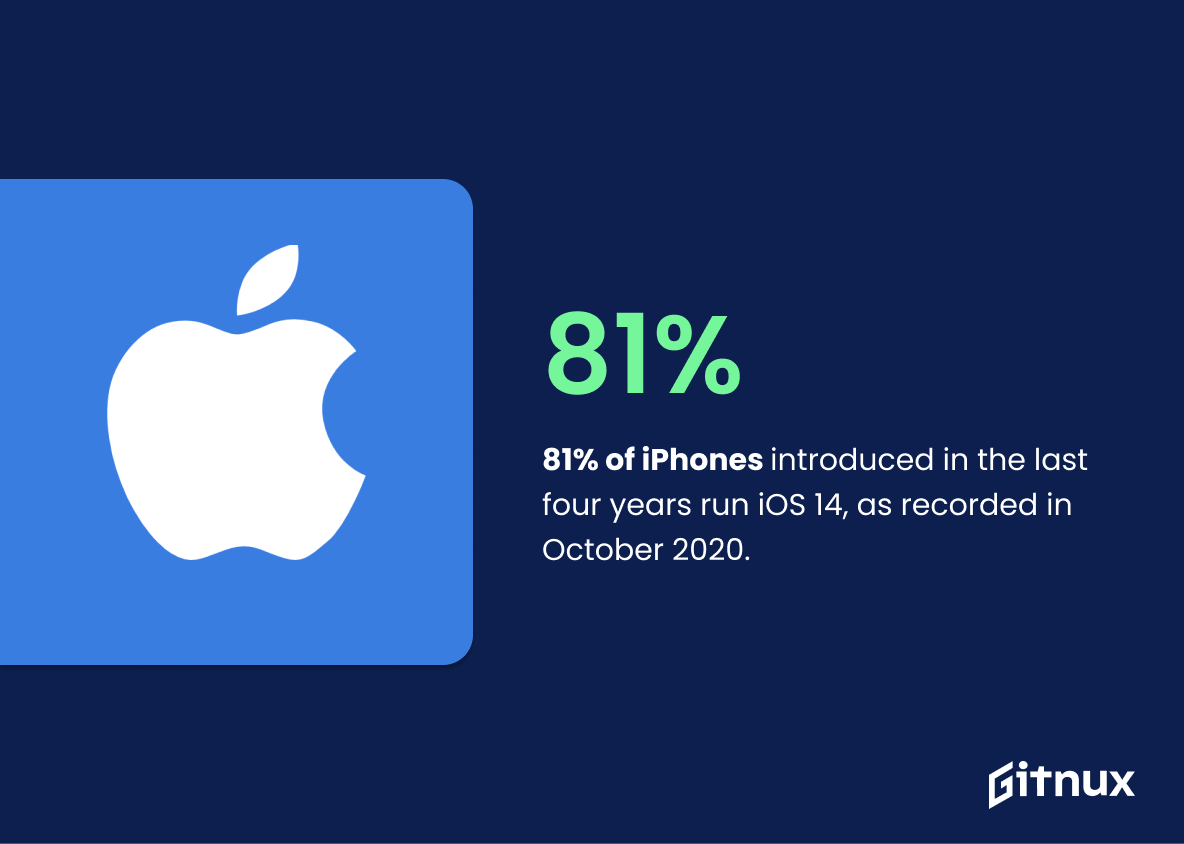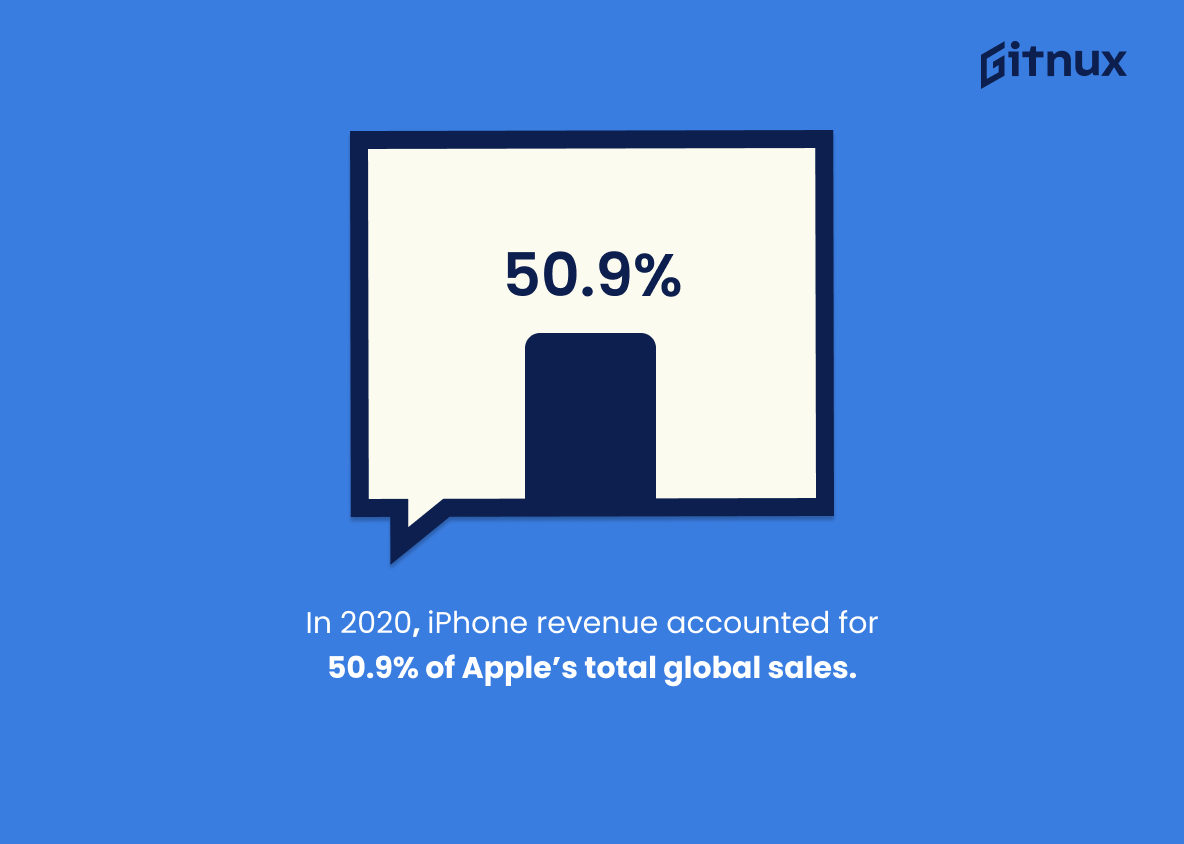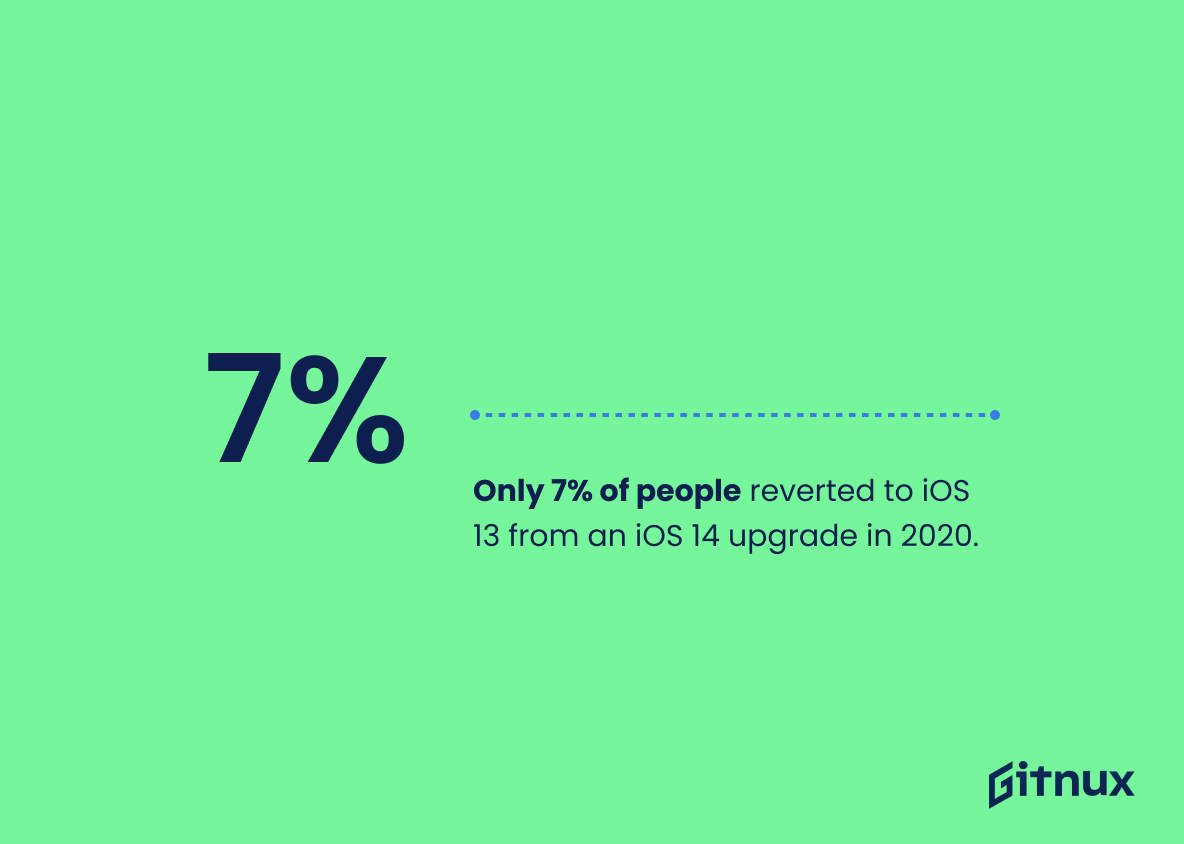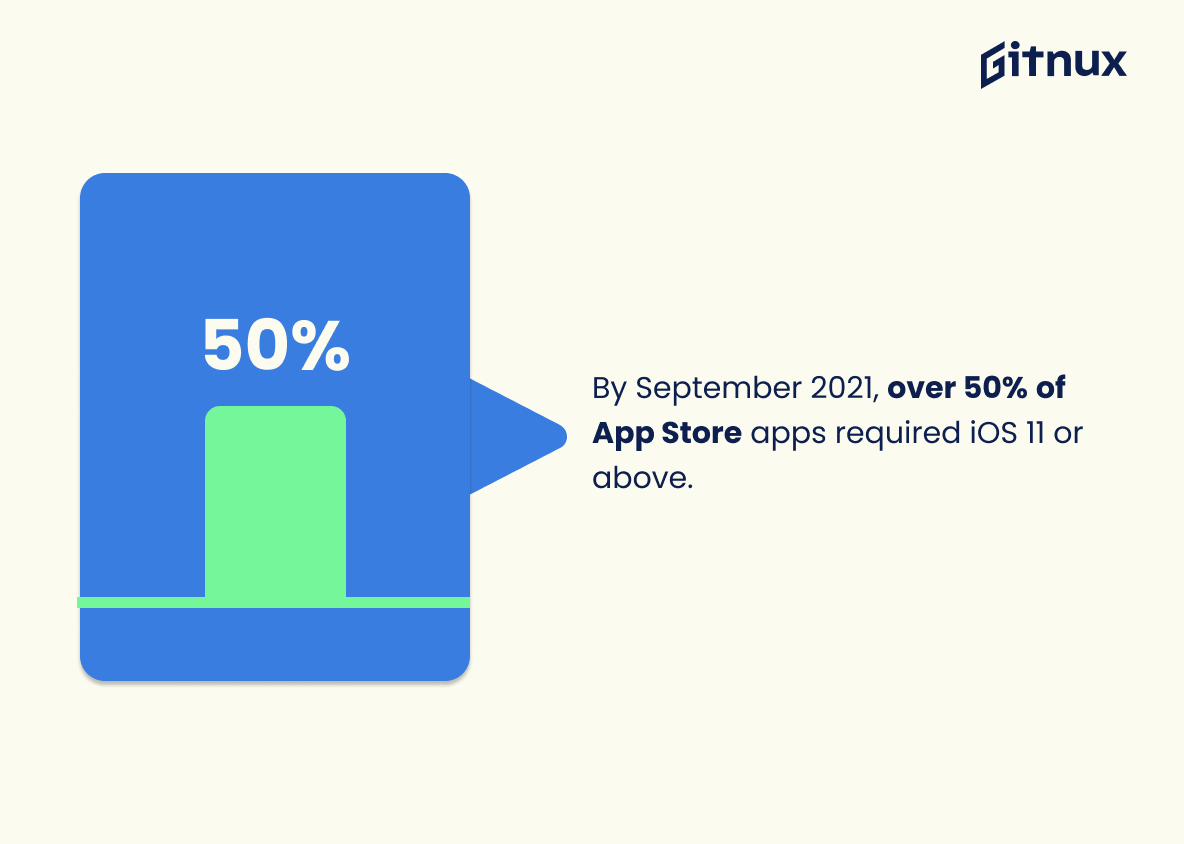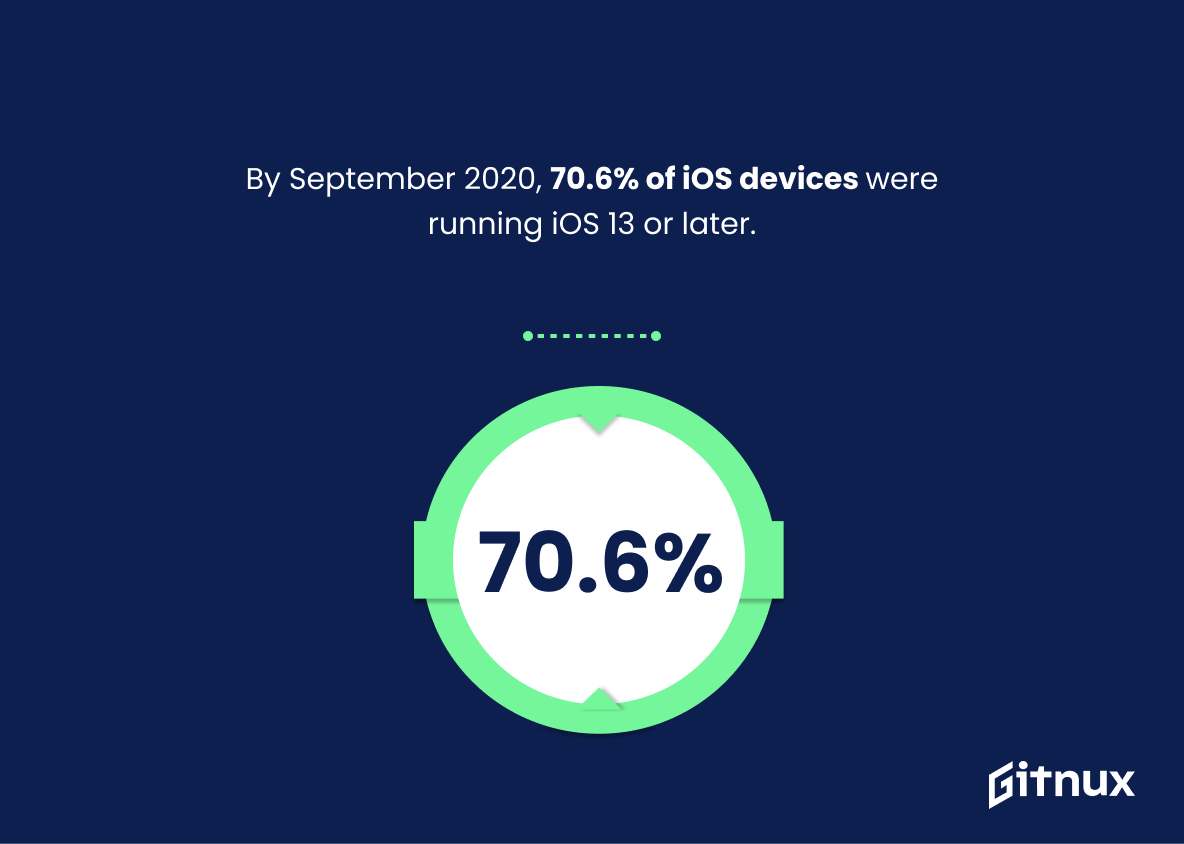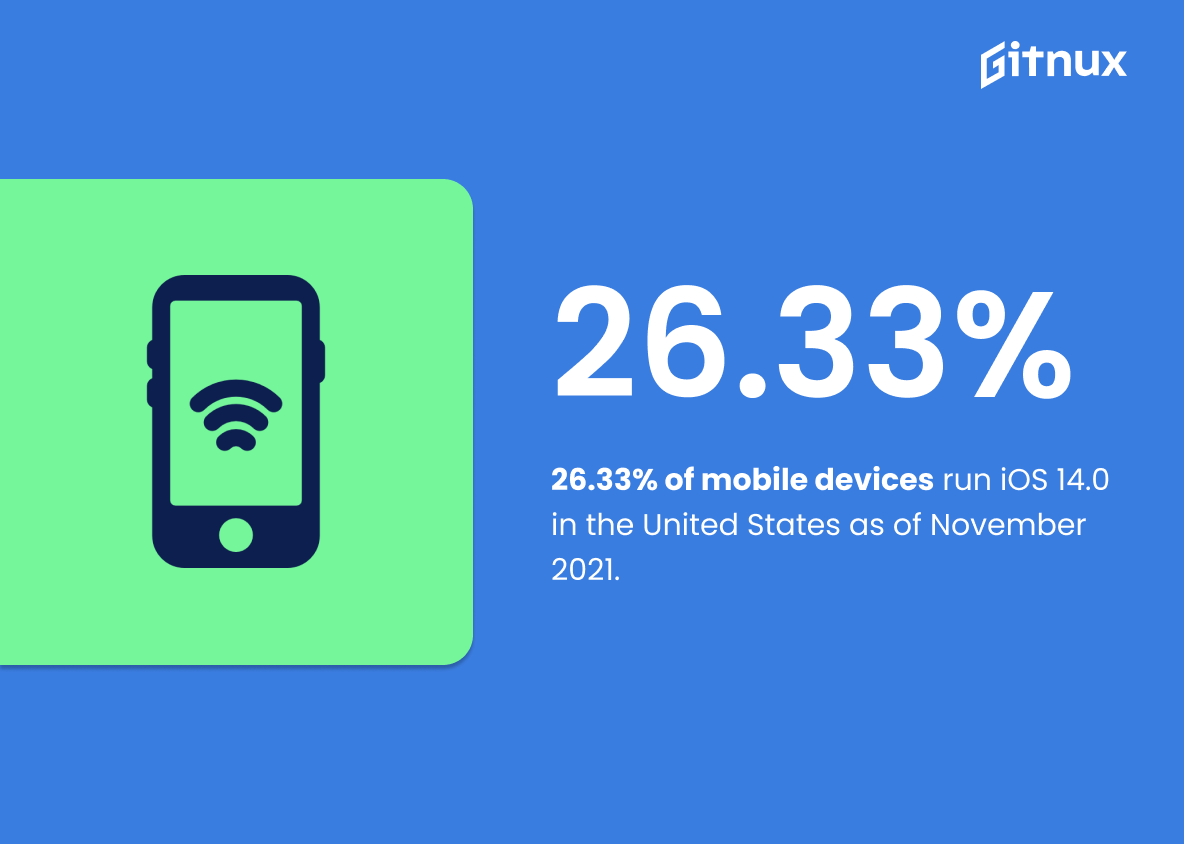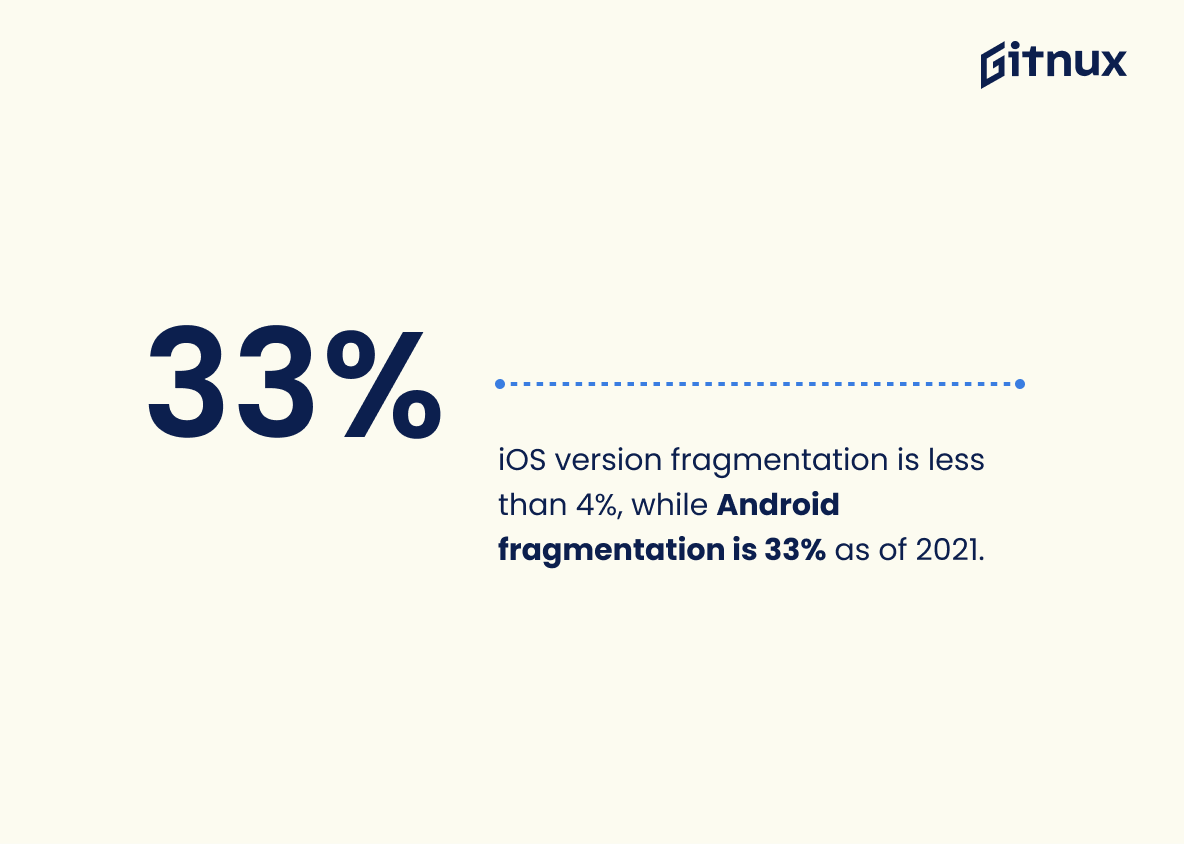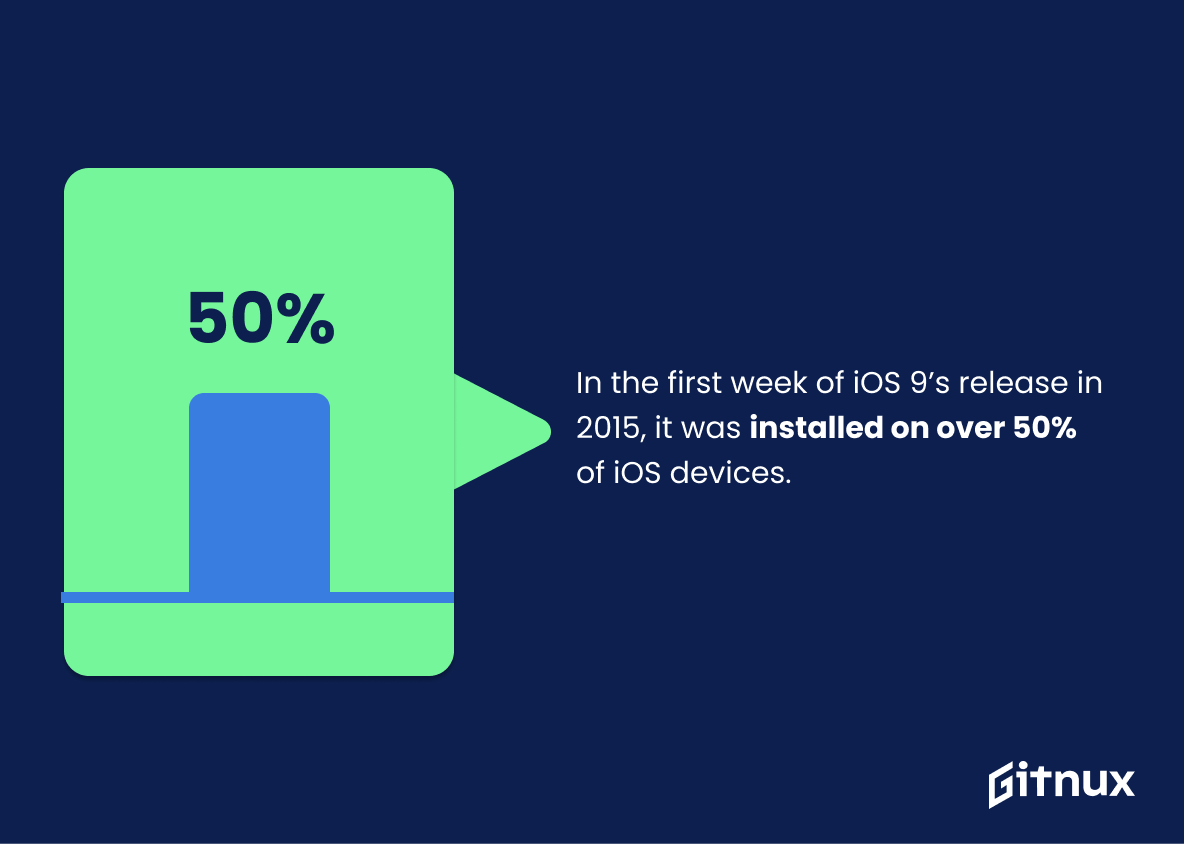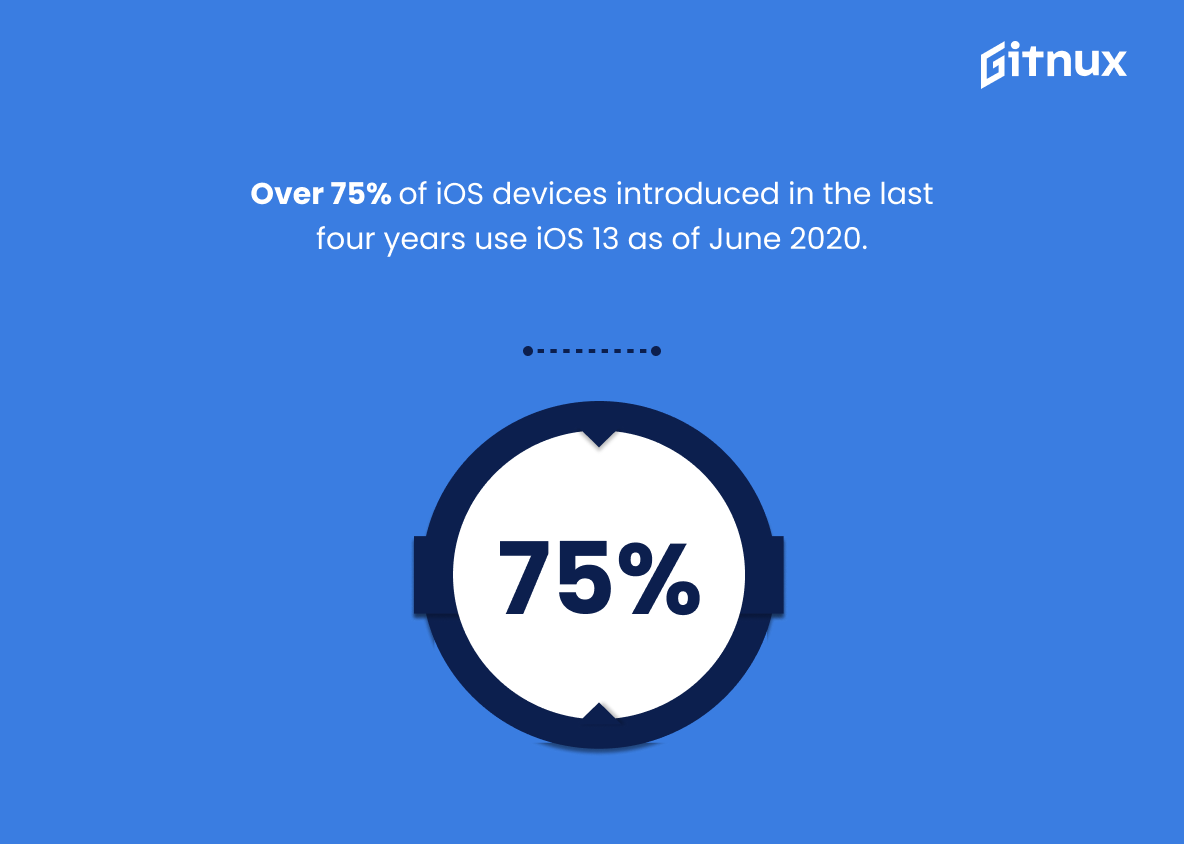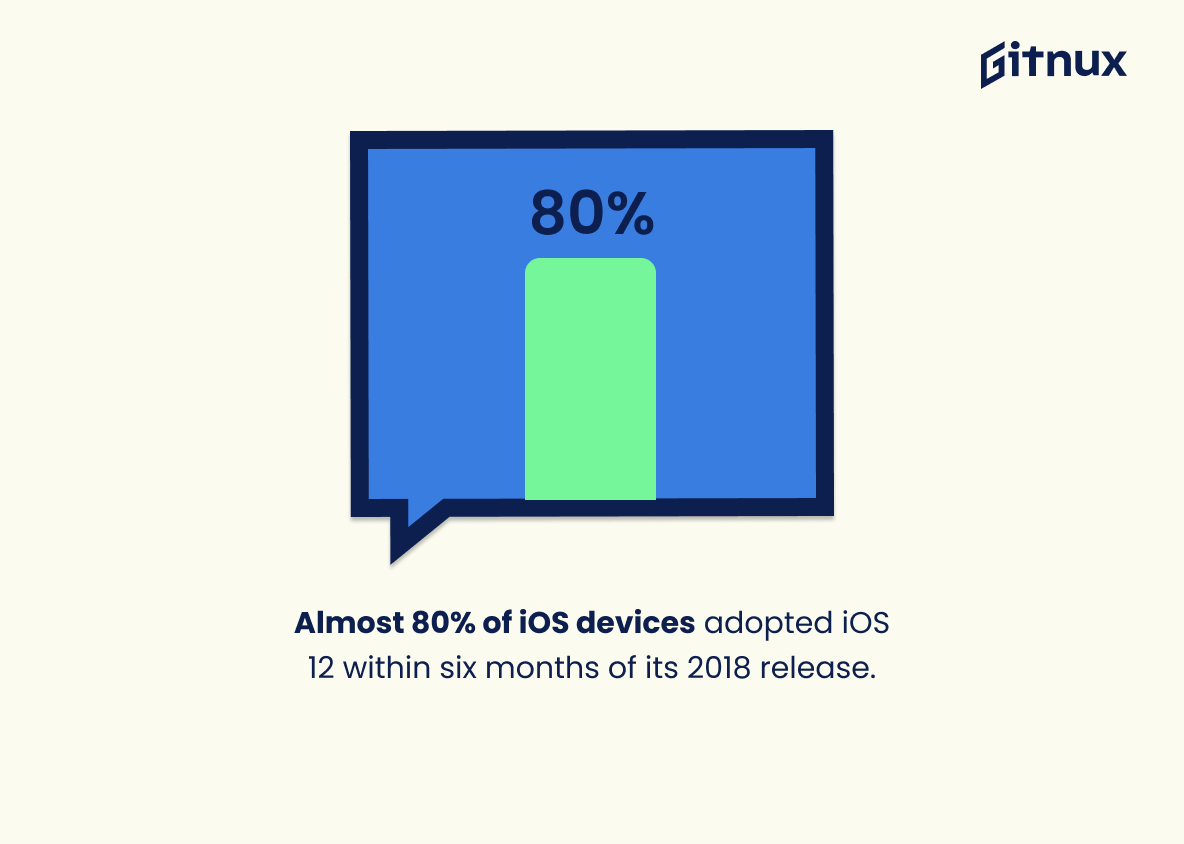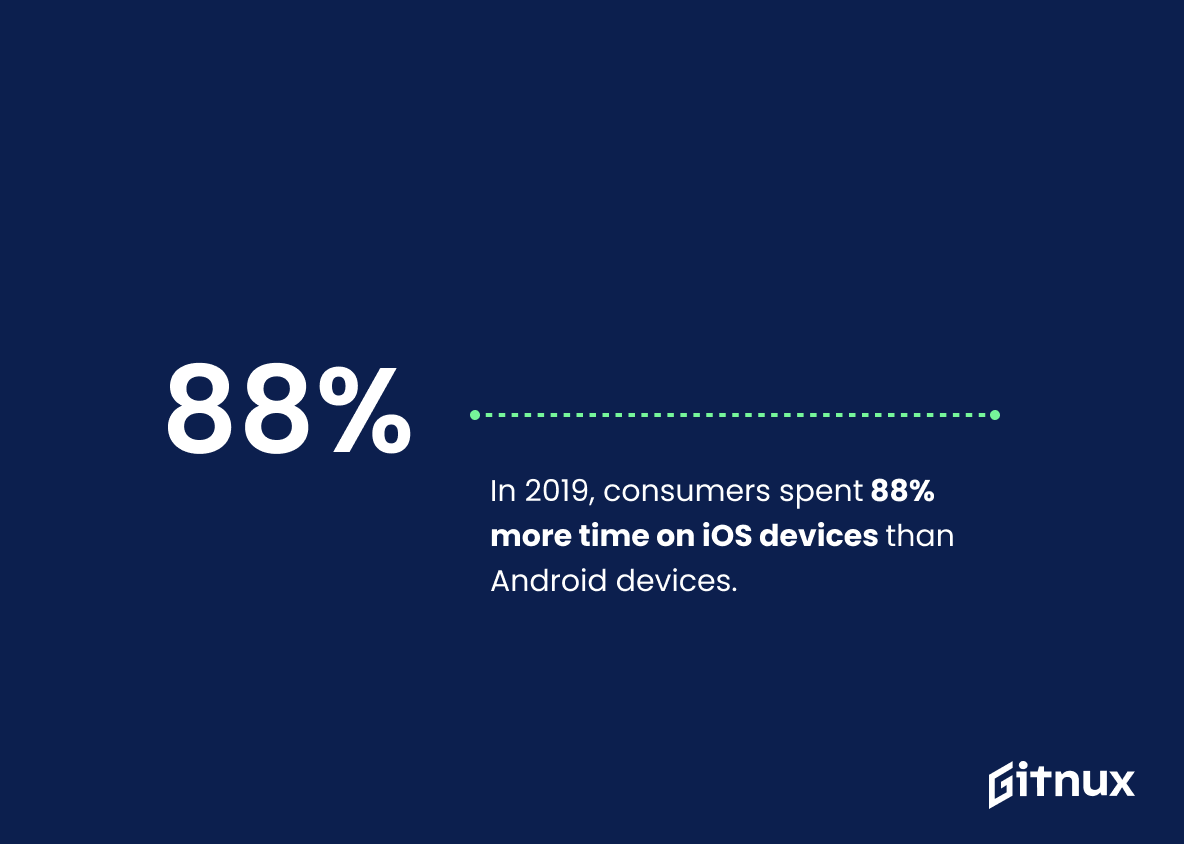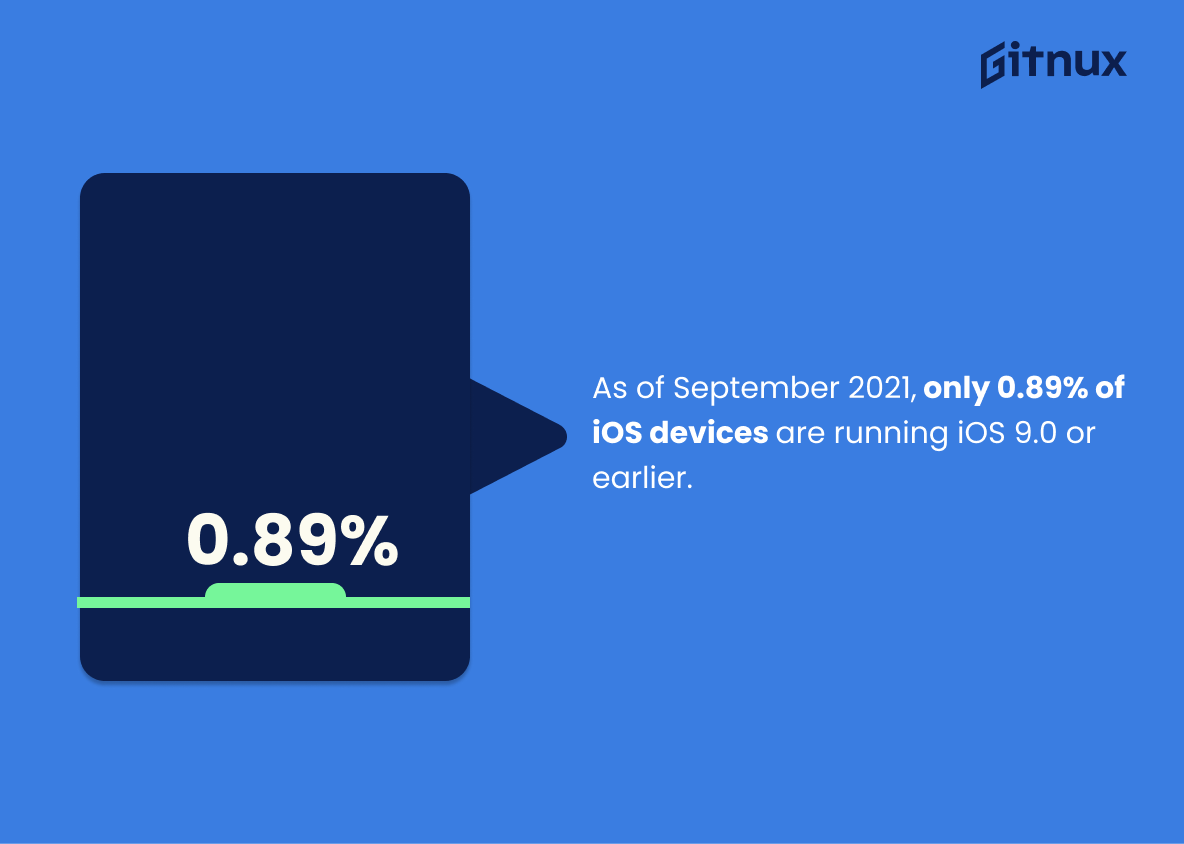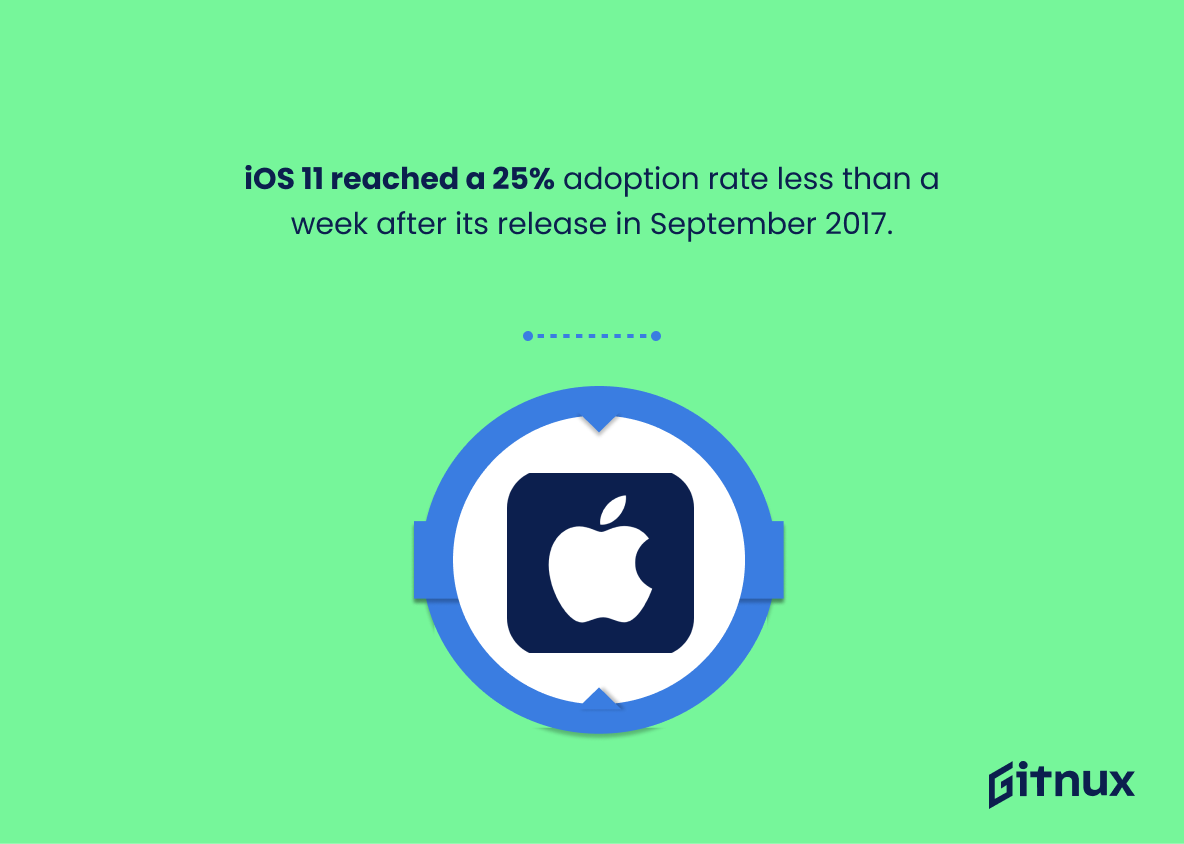As of June 2021, iOS 14 is installed on more than 90% of iOS devices. As of November 2021, only 10% of iPhone users are running iOS 15. In 2020, 1.5 billion Apple devices were actively in use worldwide and 81% of iPhones introduced in the last four years run iOS 14 as recorded in October 2020. Additionally, iPhone revenue accounted for 50.9% percent of Apple’s total global sales that year while only 7% reverted to an earlier version from their upgrade to iOS 14 by December 2020.
By September 2021 over half the apps available on App Store required at least 11 or later versions with 70.6 % using 13 or higher a month prior; 26 .33 % ran on IOS14 .0 within United States alone during November 2021 whereas 87%, one highest so far , used IOS10 back 2017 when it was released followed by 50+ adoption rate for IOS7 just week after its release 2013 ; 80 +percent adopted 12 within 6 months 2018 & 88 percent spent time more time ios device compared android 2019 . Finally 0 89 per cent still runs 9 0 lower september this year despite 25 plus percentage adopting 11 less than week after launch 2017
This statistic is a testament to the success of iOS 14, demonstrating its widespread adoption among iOS users. It is a key indicator of the popularity of the operating system and its features, and is therefore an important piece of information to consider when discussing iOS version statistics.
As of 2020, 1.5 billion Apple devices are actively in use worldwide.
This statistic is a testament to the immense popularity of Apple devices, and serves as a reminder of the sheer number of users that will be affected by any changes to the iOS version. It is a powerful indicator of the impact that iOS version statistics have on the global population.
Ios Version Statistics Overview
81% of iPhones introduced in the last four years run iOS 14, as recorded in October 2020.
This statistic is a testament to the success of iOS 14, as it demonstrates that the majority of iPhones released in the last four years are running the latest version of the operating system. This is significant for a blog post about iOS version statistics, as it provides a snapshot of the current state of the iOS ecosystem and highlights the popularity of the latest version.
In 2020, iPhone revenue accounted for 50.9% of Apple’s total global sales.
This statistic is a testament to the immense success of the iPhone in 2020, highlighting its importance to Apple’s global sales. It is a key indicator of the popularity of the iPhone and its influence on the iOS platform, making it a crucial piece of information for any blog post about iOS version statistics.
Only 7% of people reverted to iOS 13 from an iOS 14 upgrade in 2020.
This statistic is a telling indication of the success of iOS 14, as it suggests that the vast majority of users who upgraded to the new version were satisfied with the changes and chose to remain on it. This is an important piece of information for anyone interested in iOS version statistics, as it provides insight into the overall satisfaction with the new version.
By September 2021, over 50% of App Store apps required iOS 11 or above.
This statistic is a telling indication of the importance of iOS 11 and above for App Store apps. It highlights the need for developers to ensure their apps are compatible with the latest iOS versions in order to remain competitive in the App Store. Furthermore, it serves as a reminder to users that they should keep their devices up to date in order to access the latest apps and features.
By September 2020, 70.6% of iOS devices were running iOS 13 or later.
This statistic is a testament to the success of iOS 13, demonstrating that the majority of iOS users have adopted the new version of the operating system. This is important to note in a blog post about iOS version statistics, as it shows that the latest version of iOS is widely accepted and used by the majority of iOS users.
26.33% of mobile devices run iOS 14.0 in the United States as of November 2021.
This statistic is a valuable insight into the current state of iOS usage in the United States. It provides a snapshot of the current market share of iOS 14.0, which can be used to inform decisions about the development and marketing of iOS apps. Additionally, it can be used to compare the usage of iOS 14.0 to previous versions of iOS, allowing for a better understanding of the trends in iOS usage.
iOS 7 adoption surpassed 50% within one week of its September 2013 release.
This statistic is a testament to the immense popularity of iOS 7, demonstrating that within a week of its release, it had already been adopted by more than half of all iOS users. This is a remarkable achievement, and serves as a powerful reminder of the impact that Apple’s mobile operating system has had on the industry. It is also a useful indicator of the success of the iOS platform, and provides valuable insight into the preferences of iOS users.
iOS version fragmentation is less than 4%, while Android fragmentation is 33% as of 2021.
This statistic is a telling indication of the relative stability of the iOS platform compared to Android. With such a low fragmentation rate, iOS users can be sure that their devices are running the latest version of the operating system, ensuring that they have access to the latest features and security updates. This makes iOS a more reliable and secure platform for users, which is why it is important to consider when discussing iOS version statistics.
In the first week of iOS 9’s release in 2015, it was installed on over 50% of iOS devices.
This statistic is a testament to the popularity of iOS 9 and its widespread adoption among iOS users. It demonstrates the success of the new version and its ability to capture the attention of the iOS user base. This statistic is an important indicator of the success of iOS 9 and provides valuable insight into the current state of the iOS platform.
Over 75% of iOS devices introduced in the last four years use iOS 13 as of June 2020.
This statistic is a testament to the success of iOS 13, demonstrating that the majority of iOS devices released in the last four years have adopted the latest version of the operating system. This is significant for a blog post about iOS version statistics, as it provides a snapshot of the current state of the iOS ecosystem and highlights the popularity of the latest version.
On average, 92.5% of iPhone owners stay on the iOS platform when purchasing a new phone.
This statistic is a testament to the loyalty of iPhone owners to the iOS platform. It speaks to the quality of the iOS experience and the satisfaction of users with the platform. It is an important statistic to consider when discussing iOS version statistics, as it provides insight into the user base and their preferences.
Almost 80% of iOS devices adopted iOS 12 within six months of its 2018 release.
This statistic is a testament to the popularity of iOS 12, demonstrating that the majority of iOS users were eager to upgrade to the new version shortly after its release. It speaks to the trust that iOS users have in the Apple brand, and the reliability of their products. This statistic is an important indicator of the success of iOS 12, and is a valuable piece of information for anyone interested in iOS version statistics.
In 2019, consumers spent 88% more time on iOS devices than Android devices.
This statistic is a powerful indicator of the popularity of iOS devices, demonstrating that consumers are increasingly turning to Apple products for their mobile needs. This data is essential for any blog post about iOS version statistics, as it provides a clear picture of the current market share of iOS devices and the trends in consumer behavior.
As of September 2021, only 0.89% of iOS devices are running iOS 9.0 or earlier.
This statistic is significant in the context of an iOS version statistics blog post as it provides insight into the current state of iOS devices. It shows that the majority of iOS devices are running a more recent version of the operating system, indicating that users are keeping up with the latest updates and taking advantage of the newest features. This is important for developers to know, as it helps them understand which versions of iOS they should be targeting when creating apps.
iOS 11 reached a 25% adoption rate less than a week after its release in September 2017.
This statistic is a testament to the popularity of iOS 11, demonstrating that a quarter of users were quick to upgrade to the new version shortly after its release. This is an impressive feat, and serves as a reminder of the widespread appeal of Apple’s mobile operating system. It is an important statistic to consider when discussing iOS version statistics, as it highlights the success of the latest version and the loyalty of Apple’s user base.
Conclusion
The statistics presented in this blog post demonstrate the widespread adoption of Apple’s iOS operating system. As of June 2021, more than 90% of all iOS devices are running on iOS 14 and over 75% of iPhones introduced in the last four years use either iOS 13 or later. Additionally, iPhone revenue accounted for 50.9% of Apple’s total global sales in 2020 and consumers spent 88% more time on their iOS devices compared to Android devices that same year. Furthermore, only 0.89 percent were still using an older version such as 9 or earlier by September 2021 which shows how quickly users upgrade to newer versions when they become available. These figures highlight just how popular and successful Apple’s mobile platform has been since its launch nearly 15 years ago
References
0. – https://www.developer.apple.com
1. – https://www.appfigures.com
2. – https://www.macdailynews.com
3. – https://www.statista.com
4. – https://www.time.com
5. – https://www.appleinsider.com
6. – https://www.techcrunch.com
7. – https://www.macworld.com
8. – https://www.gs.statcounter.com
9. – https://www.9to5mac.com
10. – https://www.apple.com
11. – https://www.arstechnica.com
ZipDo, cited June 2023: Ios Version Statistics
